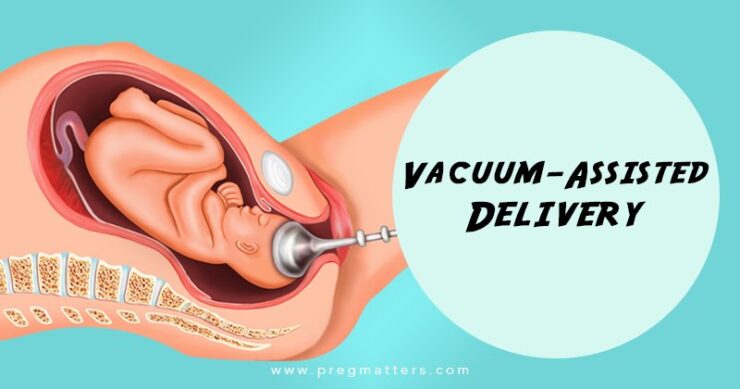In vacuum-assisted vaginal delivery, the doctor uses a vacuum extractor (a vacuum device) to help move the baby through the birth canal. Vacuum extractor consists of a soft plastic cup with a handle and a vacuum pump. The doctor uses vacuum suction to attach the soft plastic cup to the baby’s head and then uses the handle on the cup to guide the baby through the birth canal.
Vacuum extractor is safe to use only when your baby is far enough down the birth canal. Your doctor will check carefully to make sure that the baby is very close to being born. If the baby’s head is too high, doctor will recommend a cesarean birth (C-section).
Reasons For Vacuum-Assisted Delivery
The following are the reasons for using vacuum extractor to assist a vaginal delivery:
- The baby may no longer be moving down through the birth canal ever after pushing for several hours.
- You may be too exhausted to push any longer.
- The baby may be showing signs of distress and need to come out faster than you can push it out on your own.
- A medical problem may make it risky for you to push.
What Happens During A Vacuum-Assisted Delivery?
The doctor will give you medicine to block pain. This may either an epidural block or a numbing medicine placed in the vagina.
The doctor places plastic cup carefully on the baby’s head. Then, during a contraction, you will be asked to push again. At the same time, the doctor will gently pull to help deliver your baby. After the baby’s head is delivered, you will push the baby the rest of the way out.
If the doctor is unable to move your baby with help of vacuum extractor, he/she may recommend you to have a cesarean birth (C-section).
What Are The Risks OF A Vacuum-Assisted Delivery?
There are some risks with vacuum-assisted delivery, although most of these risks are not severe. When properly handled, it rarely causes lasting problems.
The risks for the mother include:
- There is a higher chance of having tears in the vagina or on the perineum compared to a vaginal birth that does not use the vacuum.
The risks for the baby include:
- There may be some bleeding under the baby’s scalp. It will go away and does not cause serious problems. There is a likelihood of the baby having jaundice (look a little yellow), which may be treated with light therapy.
- There may be another type of bleeding underneath the covering of the skull bone. It will go away and does not cause serious problems.
- There is a slight chance of bleeding inside the skull, which can be very serious. But, this occurs rarely.

